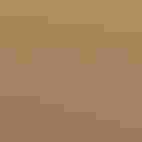Pectoral Sandpiper
At a Glance
This is one of the 'grasspipers,' more likely to be seen in grassy marshes or wet fields than on wide-open mudflats. Its spring migration is mostly through the Great Plains, with smaller numbers east to the Atlantic; the species is found coast to coast in fall, but is still scarcer in the west. The name 'Pectoral' refers to the inflatable air sac on the male's chest, puffed out during his bizarre hooting flight display over the Arctic tundra.
All bird guide text and rangemaps adapted from by Kenn Kaufman© 1996, used by permission of Houghton Mifflin Harcourt Publishing Company. All rights reserved.
Category
Sandpiper-like Birds, Sandpipers
IUCN Status
Least Concern
Habitat
Coasts and Shorelines, Fields, Meadows, and Grasslands, Freshwater Wetlands, Lakes, Ponds, and Rivers, Saltwater Wetlands, Tundra and Boreal Habitats
Region
Alaska and The North, California, Eastern Canada, Florida, Great Lakes, Mid Atlantic, New England, Northwest, Plains, Rocky Mountains, Southeast, Southwest, Texas, Western Canada
Behavior
Direct Flight, Erratic, Rapid Wingbeats, Running
Population
1.600.000
Range & Identification
Migration & Range Maps
The winter range is mostly in South America, but some (probably from nesting grounds in Siberia) migrate to Australia and New Zealand. Compared to other shorebirds, migration is relatively early in spring and late in fall. Adults migrate south at least a month before juveniles, on average, with adults peaking in late August, young birds in late September.
Description
9" (23 cm). Might suggest Least Sandpiper, mostly brown with yellowish legs, but much larger, with more stretched-out shape. Sharp contrast separates brown streaked breast from white belly. Heavily striped on back. Males larger than females.
Size
About the size of a Robin
Color
Black, Brown, Gray, White, Yellow
Wing Shape
Long, Pointed, Tapered
Tail Shape
Pointed, Rounded, Short, Wedge-shaped
Songs and Calls
A dull krrrrp.
Call Pattern
Flat
Call Type
Buzz, Croak/Quack, Rattle, Scream, Trill
Habitat
In migration, prairie pools, muddy shores, fresh and tidal marshes; in summer, tundra. Migrants favor grassy places rather than open mudflats. Often seen along grassy edges of shores, at edges of tidal marsh, in flooded fields or wet meadows. Sometimes on dry prairie or even plowed fields. On breeding grounds, favors wet grassy areas of tundra.
Sign up for ³Ô¹ÏºÚÁÏ's newsletter to learn more about birds like the Pectoral Sandpiper
Behavior
Eggs
4. Whitish to olive-buff, blotched with dark brown. Incubation is by female only, 21-23 days.
Young
Downy young leave nest soon after hatching. Female tends young, but young feed themselves. Age at first flight about 21 days.
Feeding Behavior
Forages by picking up items from surface of ground, also by probing in mud or shallow water.
Diet
Mostly insects. Diet not well known. On breeding grounds, feeds mostly on insects, especially flies and their larvae, also beetles and others. Also eats amphipods, spiders, some seeds. Diet in migration may include small crabs and other crustaceans, plus other aquatic invertebrates, but insects may still be main food.
Nesting
In flight display, male puffs out chest sac so that chest looks like a feathered balloon. As the male flies low over a female on the ground, he gives low-pitched throbbing hooting noise; after passing female he circles, alternating flutters and glides, back to his starting point. On ground, male approaches female with tail raised, wings drooping, chest puffed out. One male may mate with several females, and he takes no part in caring for the eggs or young. Nest site is on ground in grassy tundra, often in dry upland site but sometimes near water, usually well hidden in grass. Nest (built by female) is shallow depression with cup-shaped lining of grass and leaves.
Conservation
Conservation Status
Numbers may have been reduced by market hunting in the late 1800s, but current numbers are probably stable.
Climate Threats Facing the Pectoral Sandpiper
Choose a temperature scenario below to see which threats will affect this species as warming increases. The same climate change-driven threats that put birds at risk will affect other wildlife and people, too.







